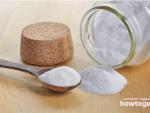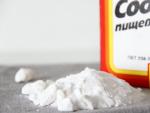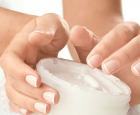Bring back the shine: how to clean silver from blackness
Knowing how to clean silver from blackness will be useful to everyone. After all, there are silver things in every home. These are jewelry, clothing items, dishes, souvenirs, and interior items. Over time, silver products darken and become coated, regardless of the conditions in which they are kept and how they are used. To give things their former shine, choose from a variety of recipes the option that suits you best.
Silver is a metal that oxidizes easily. The reaction is caused by the slightest drops of sweat, fat, cosmetics and even just water that fall on the product. Both the chemical composition of the air and the humidity of the environment play a role.
The health of the wearer influences how silver jewelry looks. Any disease changes the composition of the blood. This affects the skin, disrupting the acid-base balance. If jewelry that has maintained its natural appearance for a long time suddenly quickly turns black, you should check your health.
If jewelry that has maintained its natural appearance for a long time suddenly turns black, you should check your health.

Many owners of silver items put their things in order themselves using improvised means.
The next option to restore good appearance to silver items is to buy a special product. Such products are available in almost every jewelry store. This can be cream, liquid, wet wipes. Each variety comes with instructions for use. The downside may be lack of effectiveness, especially if you choose an inexpensive product.
Many owners of silver items put their things in order themselves, having first learned how to clean silver from blackness using improvised means.
General rules for cleaning silver
When starting to process silver products, remember that it is a soft metal. Any abrasive substances or harsh cleaning tools can damage it, including scratches and dents. Therefore, you should use only liquid, paste and cream products. Take a soft fabric. If you must use a brush, purchase one with very pliable bristles. A toddler toothbrush is great for this purpose.

- Soap solution. To create it, it is best to use dishwashing detergent that breaks down fats well. But you can get by with regular soap. Place the dirty item in soapy water and leave for a while. If the item being cleaned is without inlays, you can soak it for up to 2 hours. If there are inserts, limit yourself to a 15-minute “swim.” After this, rinse the product with clean water and wipe thoroughly with a soft cloth.
- Soda slurry. Pour some baking soda into a small bowl. Gradually add water and stir until you get the consistency of thick sour cream. The approximate ratio is 3 parts powder to 1 part water. Gently spread the resulting mixture onto the product. Do not rub (!), as undissolved soda particles can scratch the silver surface. Leave the smeared item for 30 minutes, then rinse in warm water and wipe dry.
- Soda solution. The recommended proportion for creating such a solution is 1 tbsp. l. with a heap of powder per 1 glass of hot water. Stir well. Leave the product in the resulting liquid for 15-30 minutes, then rinse and wipe.
- Tooth powder has good cleansing properties. If you can get it, wet a soft brush, dip it in the powder, and gently scrub the item. If you don't have a suitable brush, use a soft cloth. This is less convenient, but safe for the silver surface. Sometimes it is advised to replace the powder with a simple toothpaste (without dyes or additives), but it works worse.
![]()
Wet a soft brush, dip it in tooth powder, and gently brush the product.
Procedures with simple detergents may be enough to restore the silver product to its former shine. If this does not happen, move on to stronger substances.
You can clean silver from blackness at home using products such as ammonia (ammonia solution), vinegar, and citric acid. These substances create a rather aggressive environment, and silver items cannot be left in it for a long time. However, if the remedies from the first list did not help, you will have to take a risk.

For heavily soiled silver, simply place it in ammonia for a few minutes.
- Ammonia. This substance has a pungent, unpleasant odor. It is better to work with it in the fresh air or at least with an open window. First, try simply soaking a soft cloth in ammonia and wiping the silver item. If that doesn't work, dilute 1 tsp. a solution of ammonia in 0.5 cups of water. Place the product in the resulting liquid, cover with a lid and wait 15 minutes. Then rinse the item and dry it. Simply place heavily soiled silver in ammonia for a few minutes. Keep an eye on what is happening. As soon as the blackness goes away, immediately take the product out and rinse. The maximum time for which silver can be placed in pure ammonia is 10 minutes.
- Vinegar. We are not talking about vinegar essence, but about vinegar with a strength of 6-9%. It doesn't matter what it's made of. To save money, use the simplest table vinegar, but you can use apple cider vinegar, rice vinegar, and any other vinegar as long as it doesn’t contain dyes. As in the case of ammonia, you should start by wiping the silver item with a cloth soaked in the product. For a more effective effect, pour vinegar into the silver and leave for 30-90 minutes, observing what happens. Then wash the product and dry it.
- Lemon acid. You need to prepare a solution by taking 100 g of citric acid and 500 ml of water. The rest of the steps are the same as with vinegar.
To get rid of blackness deposited on silver, you can use any acid. But act very carefully, starting with the shortest possible exposure time and continuously monitoring the process in order to stop it in time and not dissolve the metal itself along with the dirt. To stop the effects of acid, the item must be thoroughly washed with running water and soap.
Unusual cleaners
- Edible vegetable oils (olive, sunflower, flaxseed, etc.) have good cleansing properties. You need to oil a soft cloth, wipe the silver thoroughly, and then wash it with hot water and soap. This method is only suitable for smooth products without inserts, as it will be difficult to remove the oil from any uneven surfaces.
- If you boil potatoes, do not discard the remaining water. Cool and place the silver in it for a couple of hours. The active ingredient in this case will be starch accumulated in the broth. The same effect can be achieved by placing contaminated products in water with potato peelings.
- Try rubbing the blackened silver surface with an eraser. In some cases this works great.
- Unusual silver cleaners include curdled milk and Coca-Cola (they act due to the acids they contain), as well as lipstick (contains fruit acids and oils).
Whatever method you choose to clean your silver at home, proceed with caution, especially when using the product for the first time. And remember that it is better not to wait until the product is covered with a thick, difficult to wash off layer of blackness, but to regularly carry out preventive cleaning.








 Nail care
Nail care Prom hairstyle for long hair
Prom hairstyle for long hair 18 wonderful New Year cards that even a child can make
18 wonderful New Year cards that even a child can make The best set of exercises for morning exercises
The best set of exercises for morning exercises